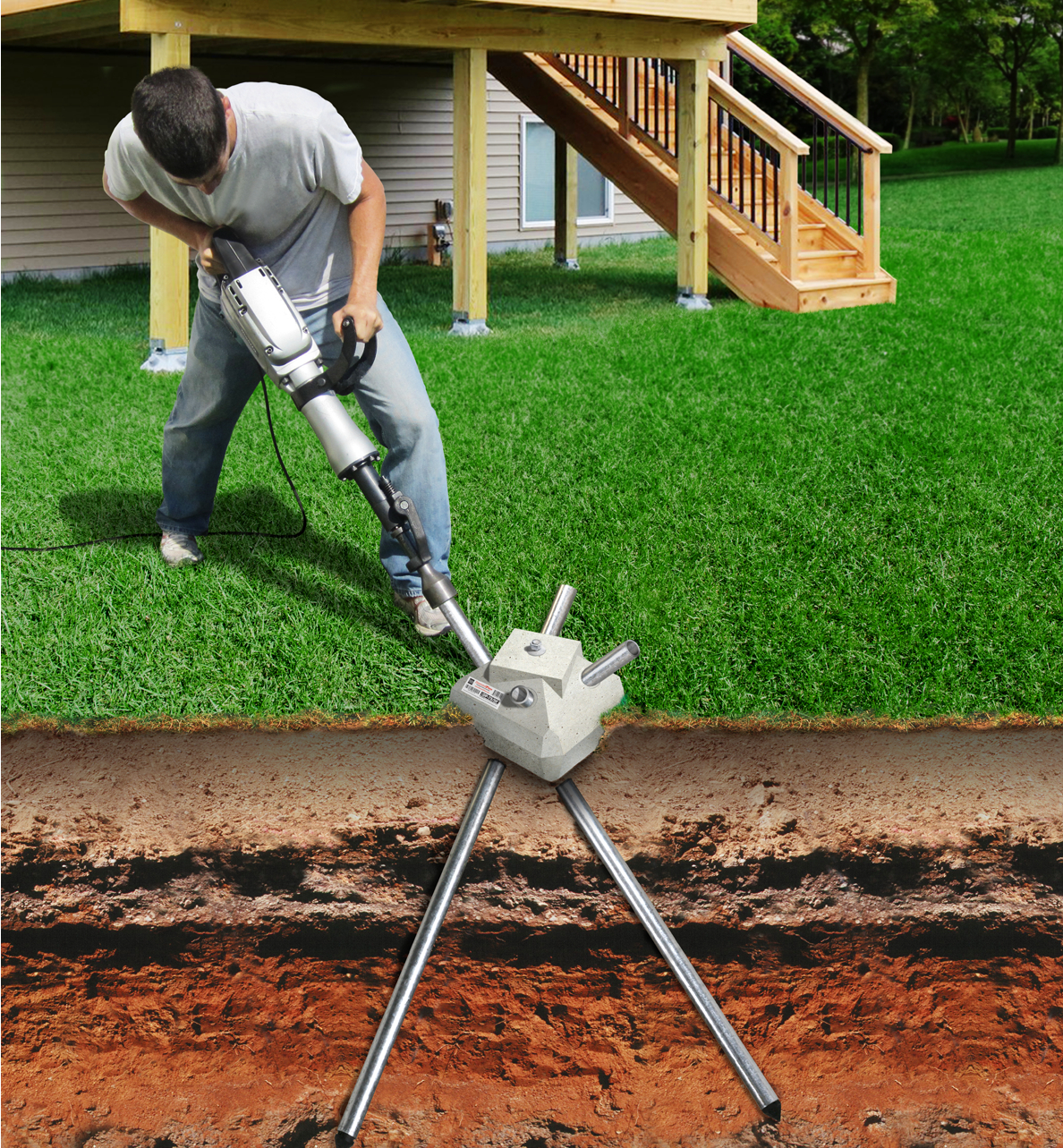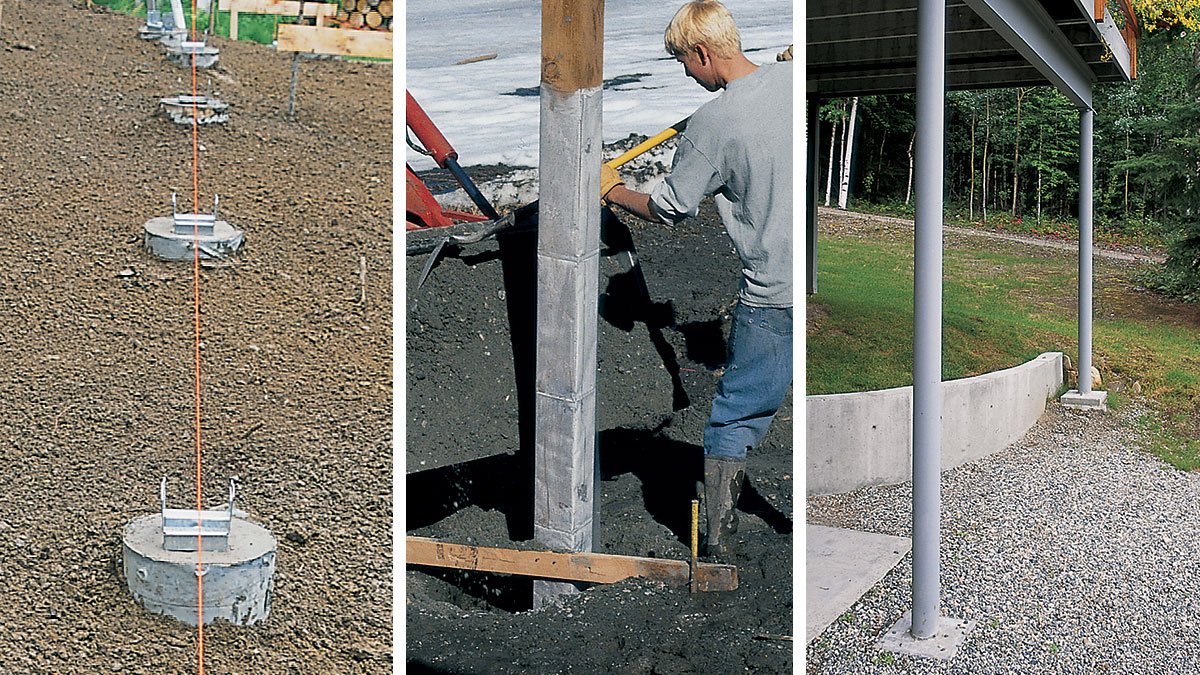Solid Ground, Solid Structure: The Basics of Deck Footings Setup
Solid Ground, Solid Structure: The Basics of Deck Footings Setup
Blog Article
Boost Your Deck's Security With Correct Deck Footing: Guarantee Resilient Toughness and Safety And Security
When it comes to building a deck, ensuring its stability and durability is of utmost value. One crucial variable that usually obtains forgotten is the proper installation of deck grounds. These grounds work as the structure of your deck, giving the essential assistance and security to hold up against the examination of time. By recognizing the effect of soil problems and choosing the ideal materials, you can improve your deck's stability and ensure its durable sturdiness and safety. So, how exactly do you set about attaining this? In this discussion, we will certainly check out the significance of proper deck ground, guide you through the detailed procedure of installation, and highlight the importance of normal maintenance to maintain your deck's security.
Why Correct Deck Ground Issues
Appropriate deck ground is vital for ensuring the security and long-term resilience of any type of deck framework. The deck footing, or structure, works as the anchor factor for the entire deck, supporting the weight of the structure and moving it to the ground listed below - Deck Footings. Without a solid footing, a deck can come to be unstable, resulting in structural failure and possible safety dangers

In addition, proper deck ground assists to shield versus wetness damage. Dampness can leak right into the ground and weaken the foundation, resulting in decomposing or degeneration. By making use of appropriate products and methods for the ground, such as concrete piers or helical heaps, the deck can be raised in the air, reducing call with dampness and lengthening its lifespan.
Comprehending the Impact of Soil Problems
The security and durability of a deck structure can be significantly influenced by the soil problems in which it is constructed. Understanding the impact of soil problems is crucial for ensuring the long-lasting resilience and safety of a deck. Different kinds of dirt have differing load-bearing capabilities, drain abilities, and expansion and contraction homes, which can all affect the stability of the deck.
One vital aspect to think about is the soil's bearing capacity, which describes its capacity to support the weight of the deck and any added tons. Soils with high bearing abilities, such as compressed crushed rock or clay, are ideal for sustaining heavy structures like decks. On the various other hand, dirts with low bearing capacities, such as loosened sand or soft clay, may require added steps to enhance stability, such as deep footings or soil stabilization methods.

Furthermore, the dirt's tendency to acquire and increase with modifications in moisture material can influence the stability of the deck. Dirts with high clay web content are susceptible to significant growth and tightening, which can result in settling and shifting of the deck framework. Appropriate measures, such as setting up dampness obstacles or using alternate structure systems, may be called for to reduce the impacts of dirt movement.
Selecting the Right Footing Products
What variables should be thought about when choosing the ideal ground materials for a deck? Choosing the ideal footing products is important for making sure the security and long life of a deck. Several elements need to be taken into consideration when making this decision.
First of all, the sort of soil in the location plays a crucial role in identifying the suitable footing products. Different soils have varying load-bearing capabilities, so it is essential to choose products that can appropriately sustain the weight of the deck and any potential loads it may bear.
Second of all, the these details environment and climate condition of the area must be considered. In areas with severe wintertimes or high levels of moisture, footing materials that are immune to corrosion and degeneration, such as concrete or cured wood, are recommended. These products are extra sturdy and less prone to harm from freezing temperature levels, wetness, and pests.
Moreover, the dimension and elevation of the deck also influence the option of footing materials. Larger and taller decks call for more substantial footings to ensure security and prevent sinking or changing. In such situations, products like concrete footings or helical piers might be better.
Finally, spending plan considerations need to not be neglected. While some products might offer premium toughness and performance, they may additionally feature a higher cost. When picking the ideal footing materials for a visit site deck., it is important to strike a balance between cost and quality.
Step-by-Step Overview to Setting Up Deck Footings
When setting up deck grounds, it is necessary to adhere to a step-by-step overview to make certain security and longevity. By adhering to these steps, you can make certain that your deck will certainly have the ability to withstand the examination of time and provide a secure and enjoyable outside area for many years ahead.
The primary step in mounting deck footings is to figure out the place and format of your deck. This consists of measuring and noting the area where the footings will certainly be positioned. It is necessary to make sure that the grounds are evenly spaced and lined up with the deck's layout.
Next, you will need to dig the openings for the grounds. The depth and size of the openings will certainly depend upon the size and weight of your deck. It is crucial to dig the openings deep enough to reach below the frost line to prevent frost heave.
Once the openings are dug, you can begin putting the concrete grounds. It is recommended to utilize a pre-mixed concrete mix for this step. Load the holes with concrete, ensuring that it is degree and smooth. Utilize an article level to make sure that the grounds are plumb.
After the footings have actually been about his put, permit the concrete to treat for at the very least 2 days prior to continuing with the deck setup. This will certainly guarantee that the grounds have actually hardened and are all set to support the weight of the deck.
Routine Maintenance to Protect Deck Security
To maintain the security of your deck, normal upkeep is essential. By executing a routine maintenance timetable, you can make sure that your deck stays secure, long lasting, and visually appealing. One crucial element of upkeep is inspecting the deck for any kind of signs of damages or wear. This includes checking for loose or broken boards, rusted nails or screws, and any type of indications of rot or decay. It is essential to address these issues without delay to stop more damages and potential security hazards.
Cleaning your deck routinely is another essential upkeep job. Over time, dust, mold, and particles can collect on the surface area of the deck, bring about a unsafe and unattractive appearance. Utilizing a rigid brush and a mild detergent or power washer, you can effectively get rid of these pollutants and bring back the deck's initial beauty. Furthermore, on a regular basis using a protective sealant can assist prevent wetness damage and prolong the life of your deck.
Along with these normal maintenance tasks, it is also advisable to conduct a thorough inspection of the deck's architectural elements at the very least annually. This consists of examining the condition of the footings, beam of lights, joists, and posts. Any indicators of damage or weakness should be resolved immediately to guarantee the continued stability and safety and security of the deck.
Final Thought
In conclusion, appropriate deck ground is vital for making certain the lasting durability and safety of your deck. By complying with a detailed overview to installing deck grounds and frequently keeping them, you can enhance your deck's stability.
In this discussion, we will check out the relevance of proper deck footing, overview you via the detailed procedure of installation, and highlight the importance of regular maintenance to protect your deck's security.
Correct deck ground is crucial for guaranteeing the stability and long-term sturdiness of any type of deck framework.One of the primary reasons why proper deck footing matters is to prevent the deck from sinking or shifting over time (Deck Footings).In conclusion, appropriate deck footing is crucial for making certain the long-lasting durability and safety of your deck. By following a detailed guide to setting up deck footings and frequently preserving them, you can enhance your deck's stability
Report this page